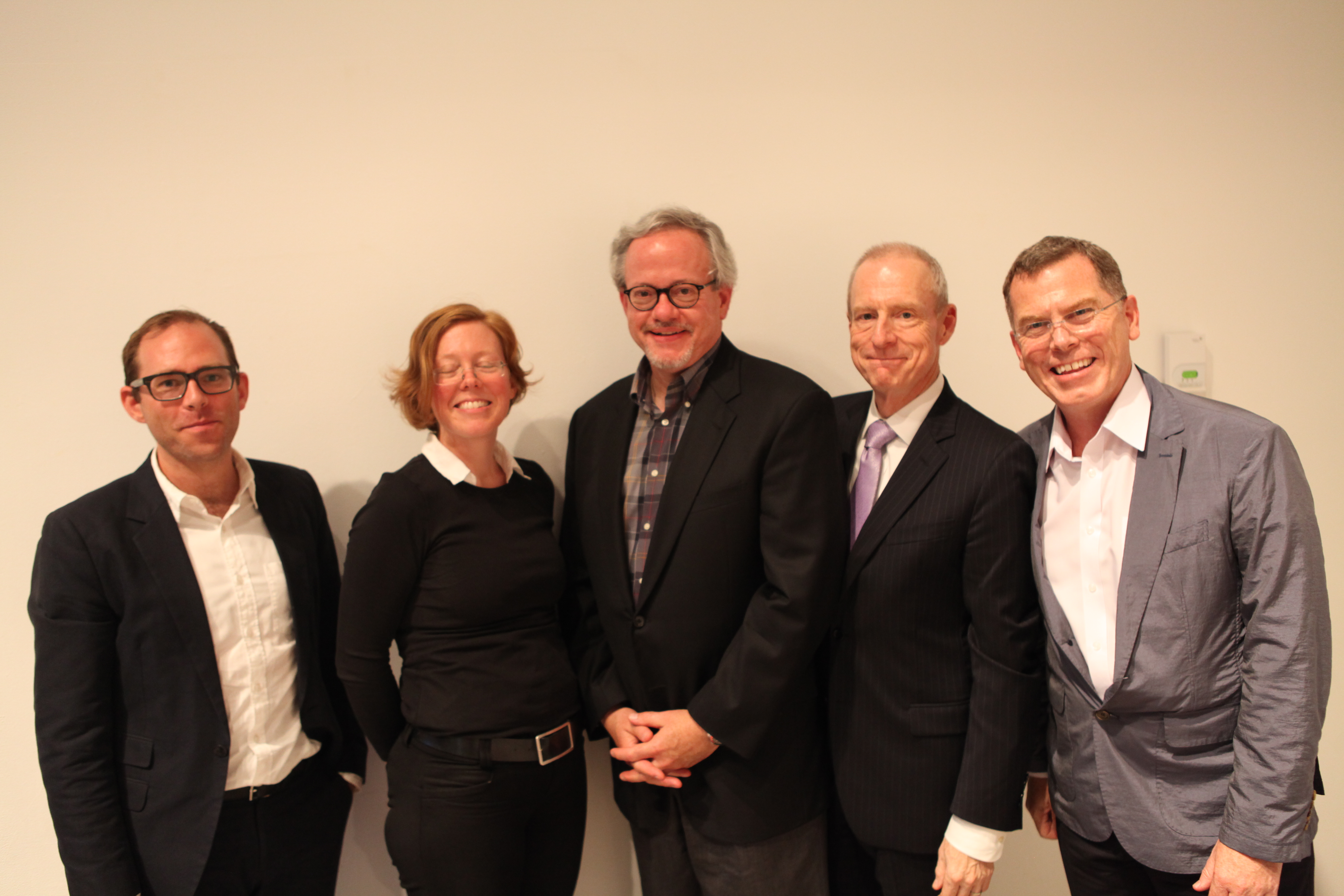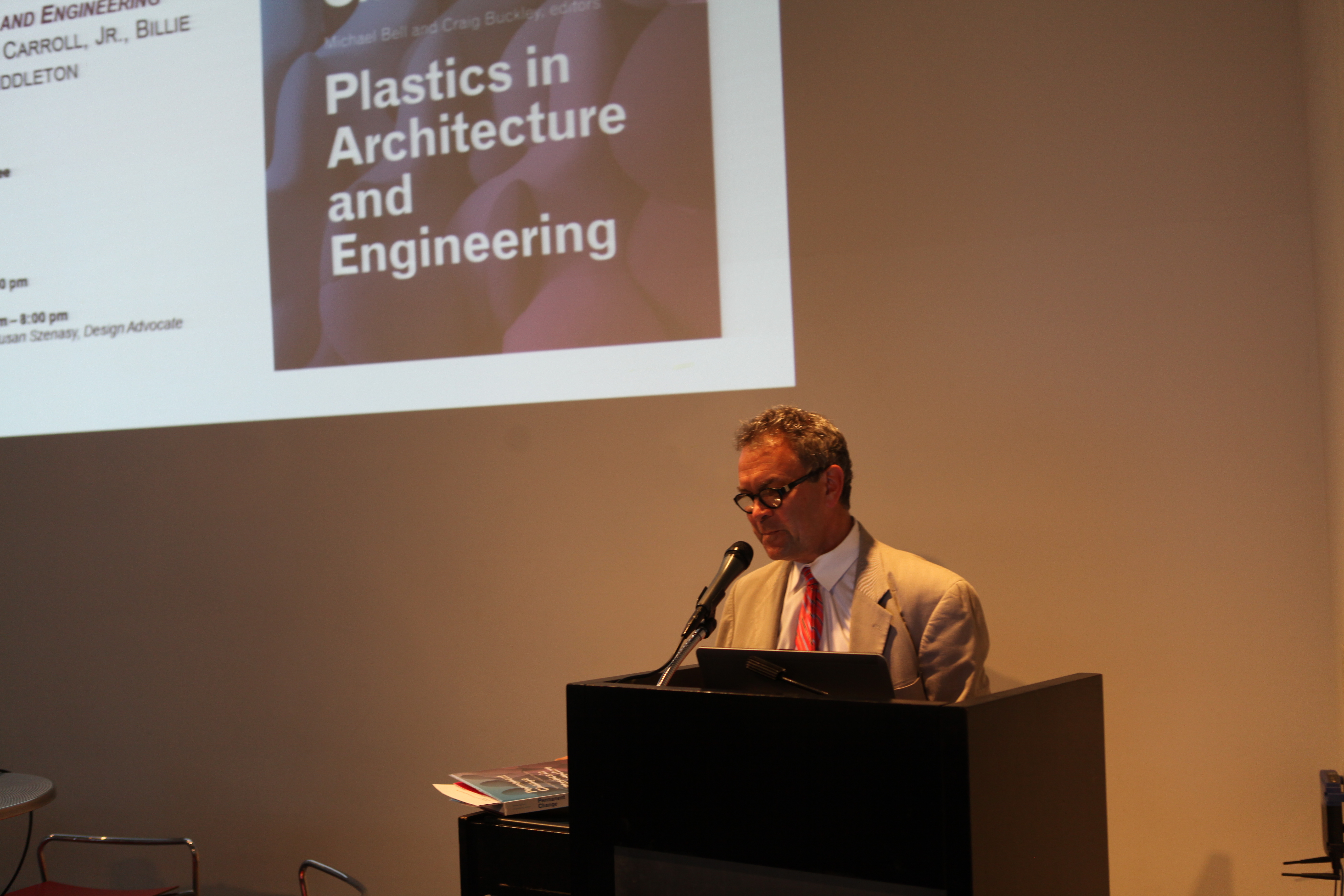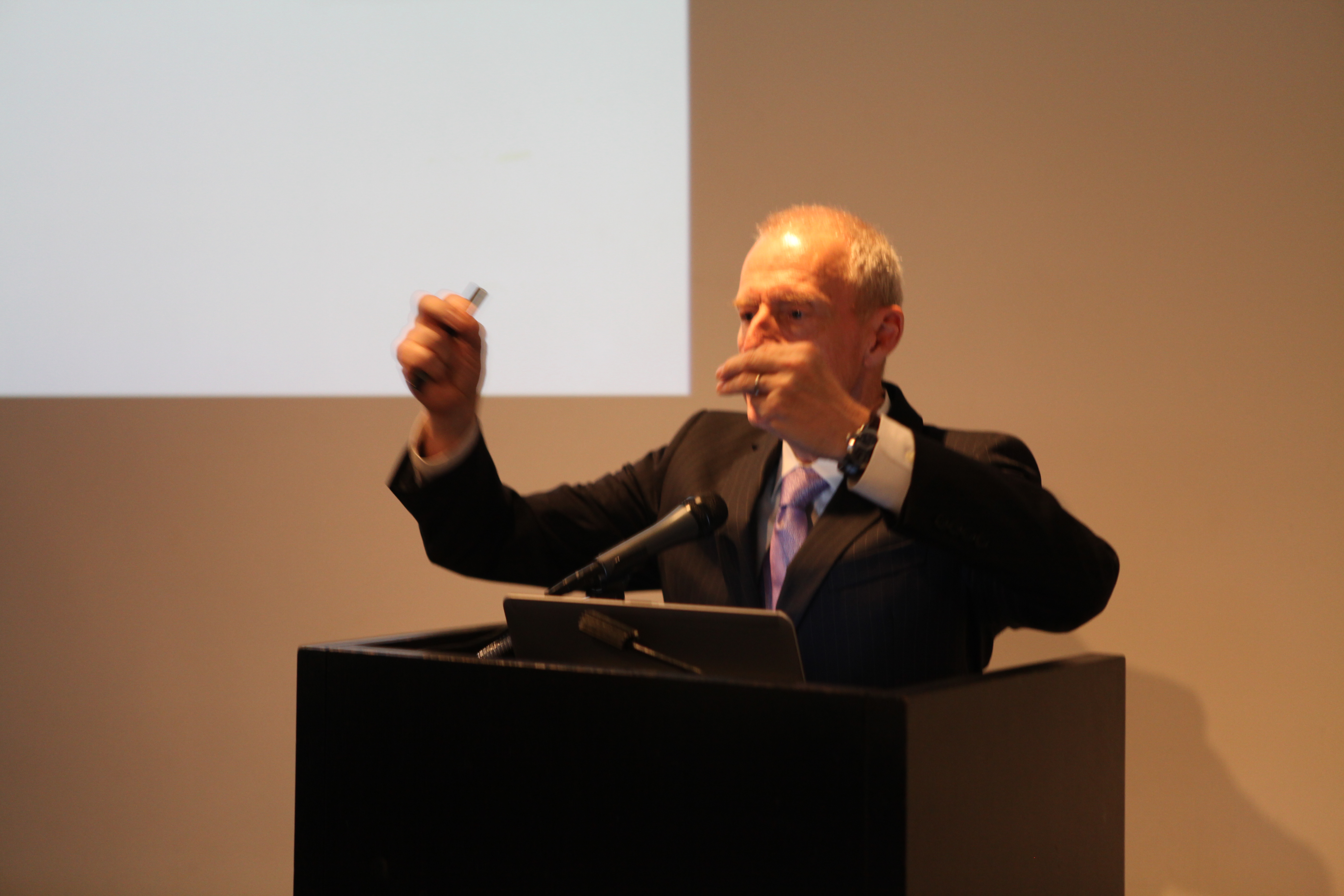by: ac
The recent publication Permanent Change: Plastics in Architecture and Engineering is, dare I say, delightful. It is the fourth in a series of conference publications at Columbia University that investigated materiality, this effervescent compilation of history, theory, and, in this case, actual chemistry made for a fascinating reading experience. At the Oculus Book Talk on 07.01.14, Co-editor Michael Bell, professor of Architecture at Columbia University, chair of the Columbia Conference on Architecture, Engineering and Materials, and director of the Master of Architecture Program Core Design Studios, led us through the conference proceedings to shed light on this complex cultural condition called “plastics.“ He also highlighted many of the conference participants and writers. Participating in the Book Talk were: Dr. William F. Carroll, Jr., vice president of Industry Issues for Occidental Chemical Corporation ; Billie Faircloth, research director at KieranTimberlake, a a leader in practice-based architectural research and innovative buildings; and George Middleton, AIA, CSI, president of George Middleton & Associates, a construction industry consulting firm based in Chicago.
According to Bell, the book is organized in four sections, a format derived from the original forum on glass in 2006. It begins with an essay by Sylvia Lavin where she dutifully quotes the famous line from the film The Graduate, then gets serious. Lavin’s essay and the dynamic Faircloth’s essay and too brief presentation on the history of plastics call out that the potential of plastics has dominated materials conversations for decades. What Faircloth ascertains via data-based metrics and information from 1950s periodicals, are a series of aspirations for the material throughout the 1960s. However, two major crises for the plastics industry, the 1973 oil crisis and the 1975 lawsuit regarding flammability, stopped the rise of plastic experimentation in its tracks. The current discourse on plastics sounds strangely deju vu. We have been espousing the potential of plastics for nine decades.
The Permanent Change text is not altogether linear, but that is what makes it delightful. It ranges from the deep and amazing essay by Jorge Otero-Pailos that discusses how, although plastics are a historic construct, the question of what kind of material IS plastic is conceptualized. Otero-Pailos shows us how the paint industry was the first to use this idea of plastic in a 19th-century house that might keep out germs with a continuous painted coating over the entire structure. From this idea we can jump to Greg Lynn’s, well, history of his work, and see that the maker really is the hinge to this discussion. Lynn’s prose is honest and revelatory. He confesses that it took him 20 years to realize that “the geometry that defines a space or volume need not be the same geometry that defines its construction of parts.” His assertion that a composite material is the ultimate artisan act is perhaps a game-changer in the “natural materials are more virtuous” war. I also appreciated looking at his body of work as a series of magnificent failures in his mind. Project after project, he confides, is a step closer to an ideal of seamless non-tectonic plastic materiality, most importantly the understanding of its shape and load forces to achieve the ideal of a structural material. Lynn is a maker, and all the experts in the room, the book, and the lecture point to an understanding of the chemistry of the composite materials, and a rejection of the idea of traditional tectonic assembly to lead the way. Lynn and his students and disciples, because they are asking honest questions, are poised to make the largest strides.
The emblematic example of the brain power behind the Permanent Change endeavor is the essay by Johan Bellum, first citing Roland Barthes’s thoughts on “the total transformation of matter,” and then, on the next page, an elegantly pragmatic diagram of the similarities in the fabric industry’s two methods of production: woven and non-woven. This kind of facile thinking from theory to materiality is found throughout the text.
Where every other “issue” with plastic was amply batted about, its un-recyclabilty, its cultural alignment with corporate domination, its basic inability to be a structural material if it is not a composite, its inability to operate at an architectural scale because of fabrication scale, and its need for even more education of the architect to fully understand the potential were not. There is nothing in the text that approaches the air quality issues that large architectural expanses would amass. I am distraught by this omission because, as a practitioner in the interior realm, this is a constant discussion, and plastics are to be avoided.
But Permanent Change makes it all seem so fun! I completely appreciate the optimism that the project puts forth, but I fear that this all seems very familiar. It will take a tenacious practitioner to break through the complexity of this material, but with this text in hand it could happen.
Annie Coggan is a principal with Coggan and Crawford Architects, and teaches at the Fashion Institute of Technology and the School of Visual Arts in New York City.
Event: Oculus Book Talk: Permanent Change: Plastics in Architecture and Engineering
Location: Center for Architecture, 07.01.14
Speakers: Michael Bell, Professor of Architecture, Columbia University; Dr. William F. Carroll, Jr., Vice President, Industry Issues for Occidental Chemical Corporation, and Adjunct Professor of Chemistry, Indiana University; Billie Faircloth, Research Director, KieranTimberlake; George Middleton, AIA, CSI, President, George Middleton & Associates
Organizers: AIANY Oculus Committee













